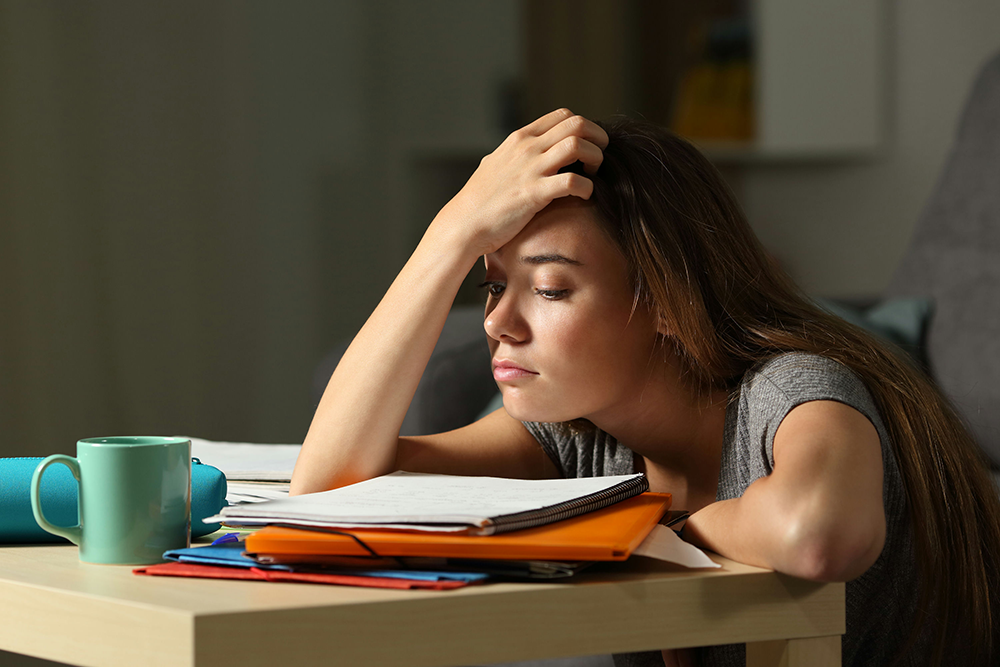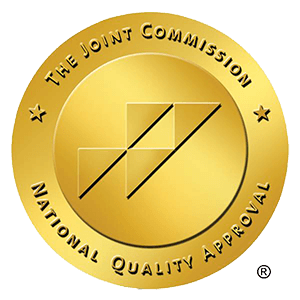
As parents, watching your teen struggle with both mood swings and substance use can feel overwhelming and frightening. You may wonder if these challenges are connected, whether one caused the other, or how to find help that addresses both issues together. At the Ohio Center for Adolescent Wellness, we understand these concerns and work with families to navigate the complex relationship between bipolar disorder and addiction in adolescents.
Bipolar disorder and substance use disorders often occur together, creating what medical professionals call a “dual diagnosis.” When these conditions overlap, they can intensify each other, making symptoms more severe and recovery more challenging.
We believe in providing comprehensive care that addresses both bipolar disorder and addiction simultaneously. Our approach recognizes that treating just one condition often leads to poorer outcomes. Through integrated treatment, we help teens develop the skills to manage their mood symptoms while building a foundation for substance-free living.
We also offer an adolescent bipolar disorder treatment plan that supports long-term recovery.
What are Bipolar Disorder and Addiction?
Bipolar disorder is a mental health condition characterized by significant shifts in mood, energy, and activity levels. These shifts include episodes of mania (unusually elevated mood and energy) and depression (persistent sadness and low energy). In teens, bipolar symptoms may appear differently than in adults, sometimes showing up as irritability rather than clear euphoria during manic phases.
Addiction, also called substance use disorder, involves continued use of alcohol or drugs despite negative consequences. It’s marked by cravings, tolerance (needing more of the substance for the same effect), and withdrawal symptoms when stopping use.
When these conditions occur together, we call it a dual diagnosis. According to the National Institute of Mental Health, about 60% of people with bipolar disorder will experience substance use issues at some point in their lives—a rate much higher than in the general population.
Key Statistics:
- Dual Diagnosis Rate: Research from the Journal of the American Academy of Child & Adolescent Psychiatry indicates that up to 40% of teens with bipolar disorder develop substance use problems
- Common Substances: Alcohol and cannabis are most frequently used, followed by stimulants and opioids
- Age of Onset: Bipolar symptoms typically begin to appear between the ages of 15-19, often coinciding with when many teens first experiment with substances
Why Teens Face Bipolar Disorder and Substance Abuse
Bipolar disorder and addiction often appear together in teens because of how the brain develops during adolescence. This is a period when changes in brain structure and function make teens more vulnerable to mental health and substance use disorders. According to the National Institute on Drug Abuse (NIDA), the parts of the brain that manage decision-making and impulse control are still developing during this time.
Some teens have a biological vulnerability that increases the likelihood of developing both bipolar disorder and addiction. Research from the National Institute of Mental Health (NIMH) shows that genetic factors can influence how the brain responds to stress, mood changes, and substances.
Environmental triggers also play a role. Stressful life events, exposure to trauma, and peer pressure are common during adolescence and can increase the risk of both conditions. These external factors can interact with a teen’s biology in ways that make symptoms worse or harder to manage.
Recognizing the differences between normal teen behavior and mental health conditions is crucial in identifying early warning signs.
Some teens use substances like alcohol, marijuana, or stimulants to manage the intense mood swings of bipolar disorder. This is called the self-medication hypothesis. While it may provide short-term relief, it often leads to worsening symptoms and a cycle of dependence.
Risk Factors Include:
- Genetic Factors: Hereditary links between bipolar disorder and substance use disorders.
- Environmental Triggers: Stressful events, trauma, family conflict, or social pressure.
- Neurological Factors: Ongoing brain development, especially in areas related to emotion regulation and impulse control.
How Bipolar Substance Abuse Develops

Bipolar disorder and addiction often occur together in teens. This combination is sometimes called “bipolar substance abuse.” The relationship between bipolar symptoms and substance use is cyclical, meaning each can make the other worse over time.
During manic episodes, teens may feel unusually energetic, euphoric, or irritable. These symptoms can lead to impulsive decisions, including using drugs or alcohol. Some teens may use substances to extend the euphoric feelings or to calm racing thoughts.
In depressive episodes, teens often feel sad, hopeless, or tired. Some turn to substances as a way to escape these emotions or to try to feel better temporarily. This is called self-medication. Substance use during these times can deepen depression and make recovery harder.
Mixed episodes combine both manic and depressive symptoms. Teens in this state may feel agitated, restless, and overwhelmed. This can lead to chaotic or unpredictable substance use, increasing the risk of harm and making it harder to identify what is causing which symptoms.
Signs of Bipolar and Drug Abuse in Adolescents
Recognizing when a teen is struggling with both bipolar disorder and substance use can be challenging. Many symptoms overlap with typical adolescent behavior, but there are key differences in intensity, duration, and impact.
Extreme Mood Swings
Teens with bipolar disorder and addiction may experience intense highs and lows that last for days or weeks.
During manic phases, they might talk quickly, sleep very little, take risks, or appear unusually confident. In depressive episodes, they may feel hopeless, isolate themselves, or lose interest in activities they once enjoyed.
Normal teen moodiness tends to be shorter in duration and triggered by specific events, like arguments or school stress. Mood swings linked to bipolar disorder are more severe and occur without clear reasons.
Parents might be concerned when mood shifts are extreme, frequent, and affect daily functioning, such as relationships, school attendance, or personal safety.
Sudden Behavioral Changes
Substance use in teens can lead to behaviors like lying, stealing, sneaking out at night, or a sudden change in friend groups. There may also be signs of intoxication, such as slurred speech, bloodshot eyes, or unusual smells on clothing.
When combined with bipolar disorder, these behaviors may become more unpredictable. For example, a teen in a manic state might use substances to extend the high, or during a depressive state to numb emotional pain.
Concern rises when these behaviors appear quickly, without a clear explanation, and seem out of character for the teen.
Declining School Performance
Teens experiencing both bipolar and addiction may show a pattern of dropping grades, missing assignments, or skipping school altogether. Teachers may report that the student seems distracted, disorganized, or disengaged.
Bipolar symptoms can make it hard to focus and manage time, especially during mood episodes. Substance use can add to this by impairing memory, motivation, and energy levels.
Academic decline is concerning when it continues over multiple weeks or months, especially if paired with mood changes or disciplinary issues.
Avoiding Family And Friends
Teens with a dual diagnosis often begin to withdraw socially. They may spend more time alone in their room, stop participating in family activities, or avoid responding to texts and calls from friends.
This isolation is different from wanting personal space. It is often tied to shame, fear of being judged, or the desire to hide substance use.
It may be concerning when a teen who was once social becomes distant or secretive, particularly if this isolation follows emotional or behavioral shifts.
Is it Bipolar Disorder and Alcohol Abuse or Something Else?
Diagnosing bipolar disorder alongside alcohol use in teens is complex. Many symptoms of bipolar disorder can overlap with other mental health conditions or effects caused by alcohol. This overlap can lead to misdiagnosis or delays in getting the right treatment.
Some symptoms of bipolar disorder are also seen in conditions like ADHD or borderline personality disorder. In these cases, professional evaluation and teen ADHD treatment may be needed to help distinguish symptoms and provide proper care. Alcohol use can make these symptoms more intense or confusing.
Alcohol affects the brain’s chemistry. In teens with bipolar disorder, it can trigger or worsen episodes. Drinking during a depressive phase may deepen sadness or hopelessness. During mania, alcohol can increase impulsivity and poor decision-making.
Can Substance Abuse Cause Bipolar Disorder?
For teens, substance abuse is typically not the direct cause of bipolar disorder. However, research shows that substance use can rewire the brain over time, which can lead to bipolar disorder. But often teens have not had the extensive experience engaging in drug abuse, for this to be the cause. However, substance use can trigger bipolar symptoms in individuals who are already genetically or biologically vulnerable.
The relationship between bipolar disorder and addiction is complex and often bidirectional. This means that teens with bipolar disorder may be more likely to misuse substances, and teens who misuse substances may be more likely to show symptoms of bipolar disorder.
Substance use can activate or worsen bipolar symptoms, especially during adolescence, when the brain is still developing. For some teens, using substances may reveal underlying bipolar disorder that had not yet shown symptoms.
Research from the National Institute of Mental Health (NIMH) and other sources supports a model where substance use does not cause bipolar disorder on its own but may act as a trigger in those already predisposed. The link is more about correlation than causation.
Effective Treatments for Bipolar Disorder and Drug Use

Treating one condition without addressing the other often leads to relapse or incomplete recovery. Integrated treatment helps address both mental health and substance use at the same time.
Therapy Options
Cognitive Behavioral Therapy (CBT) helps teens recognize and change thought patterns that contribute to both mood episodes and substance use.
Understanding the key differences between CBT vs DBT can guide families in choosing the most effective therapy approach. It focuses on managing symptoms, avoiding triggers, and building coping skills.
Dialectical Behavior Therapy (DBT) supports emotional regulation and distress tolerance. It can help teens manage mood swings from bipolar disorder and reduce impulsive behaviors related to drug use.
Family therapy involves parents or caregivers in treatment. It builds communication, sets boundaries, and improves understanding of both disorders. It also helps reduce conflict and increase support at home.
At the Ohio Center for Adolescent Wellness, teens participate in individual therapy, group therapy, and family therapy. Therapists are trained to treat both bipolar symptoms and substance use patterns together in a coordinated plan.
Medication Management
Mood stabilizers, antipsychotics, and sometimes antidepressants are used to manage bipolar disorder. These medications help reduce mood swings and stabilize emotions.
When substance use is involved, medication management requires careful monitoring. Some medications can interact with drugs or alcohol, and others may have misuse potential. Ongoing assessment ensures safety and effectiveness.
Our approach includes regular check-ins with psychiatric providers and collaboration with the therapy team. Medication plans are adjusted based on progress, symptoms, and family input, with a focus on long-term stability.
Family Support and Education
Family involvement supports long-term recovery. Parents and caregivers learn about bipolar disorder, substance use, and how to respond to symptoms and behaviors.
Family therapy sessions address communication patterns, emotional responses, and relationship dynamics. They also provide a space for conflict resolution and rebuilding trust.
Our philosophy centers on engaging the whole family in care. We offer education, support groups, and therapy sessions where families can ask questions, share concerns, and become part of the treatment process.
Steps to Handle Addiction and Bipolar Disorder in Teens
Encourage Professional Assessment
A comprehensive assessment helps identify the presence of both bipolar disorder and substance use. It usually includes clinical interviews, psychological testing, medical history, and input from family members. The goal is to understand how mood symptoms and substance use affect one another.
When talking to a teen about getting help, use calm, clear language. Focus on concern for their well-being rather than judgment. It can help to set aside a time without distractions and approach the conversation with patience.
Support Consistent Attendance at Treatment
Consistent attendance allows treatment plans to work as intended. Families can help by keeping a shared calendar, arranging transportation, and checking in regularly about how treatment is going.
Teens may face barriers such as stigma, school conflicts, or fear of being misunderstood. Listening without reacting, validating their feelings, and working with providers to adjust schedules can help reduce these challenges.
Build a Relapse Prevention Plan
A relapse prevention plan outlines steps a teen can take to avoid returning to substance use or experiencing severe mood episodes. It includes coping skills, emergency contacts, and a list of early warning signs.
Triggers vary from teen to teen. Some may include changes in sleep patterns, peer pressure, or family stress. Identifying these patterns can help the teen recognize when to use their plan.
At Ohio Center for Adolescent Wellness, relapse prevention is built into every treatment plan. Clinicians work with teens to create realistic, step-by-step strategies that reflect their specific challenges and strengths.
Frequently Asked Questions About Bipolar and Addiction
What are the success rates for teen dual diagnosis treatment?
Studies show that integrated treatment for co-occurring disorders can improve outcomes, with some programs reporting symptom improvement in 60–70% of adolescents who complete care. Long-term success often depends on continued support and follow-up after treatment.
How long does dual diagnosis treatment typically take for adolescents?
Treatment for co-occurring bipolar disorder and addiction often includes multiple phases and can last from several weeks to several months. The length depends on the teen’s symptoms, substance use patterns, and response to care.
Will my insurance cover dual diagnosis treatment for my teen?
Many insurance plans do include coverage for mental health and substance use treatment under the Mental Health Parity and Addiction Equity Act. Insurance specialists at treatment centers often verify coverage and help families understand their benefits.
How can parents distinguish between normal teen behavior and signs of bipolar disorder?
While moodiness is common in teens, bipolar disorder usually involves patterns of extreme highs (mania) and lows (depression) that interfere with daily life. Signs may include risky behavior, long-lasting mood changes, and changes in sleep or energy that go beyond typical adolescent shifts.
A Path Forward for Teens with Bipolar Disorder and Substance Abuse
 According to the Substance Abuse and Mental Health Services Administration (SAMHSA), integrated treatment approaches show better outcomes than treating each condition separately. Many teens living with both bipolar disorder and substance use disorders have been able to stabilize their mood, build supportive relationships, and reduce relapse with the right care.
According to the Substance Abuse and Mental Health Services Administration (SAMHSA), integrated treatment approaches show better outcomes than treating each condition separately. Many teens living with both bipolar disorder and substance use disorders have been able to stabilize their mood, build supportive relationships, and reduce relapse with the right care.
Some individuals benefit from an adolescent partial hospitalization program to receive consistent, supportive care. These methods help address mood regulation, substance use triggers, and communication between family members.
It’s important to remember that recovery from bipolar disorder and addiction is possible. All it takes is taking the first step to determine the best treatment approach. Reach out to the Ohio Center for Adolescent Wellness today to learn more.
References:
https://www.nimh.nih.gov/health/statistics/bipolar-disorder
https://pmc.ncbi.nlm.nih.gov/articles/PMC2768482/
https://pubmed.ncbi.nlm.nih.gov/15502597/
https://www.aacap.org/App_Themes/AACAP/Docs/clinical_practice_center/systems_of_care/sud-tay.pdf
https://nida.nih.gov/publications/drugs-brains-behavior-science-addiction/drugs-brain
https://pubmed.ncbi.nlm.nih.gov/7883738/
https://library.samhsa.gov/sites/default/files/ebp-kit-building-your-program-10112019.pdf



